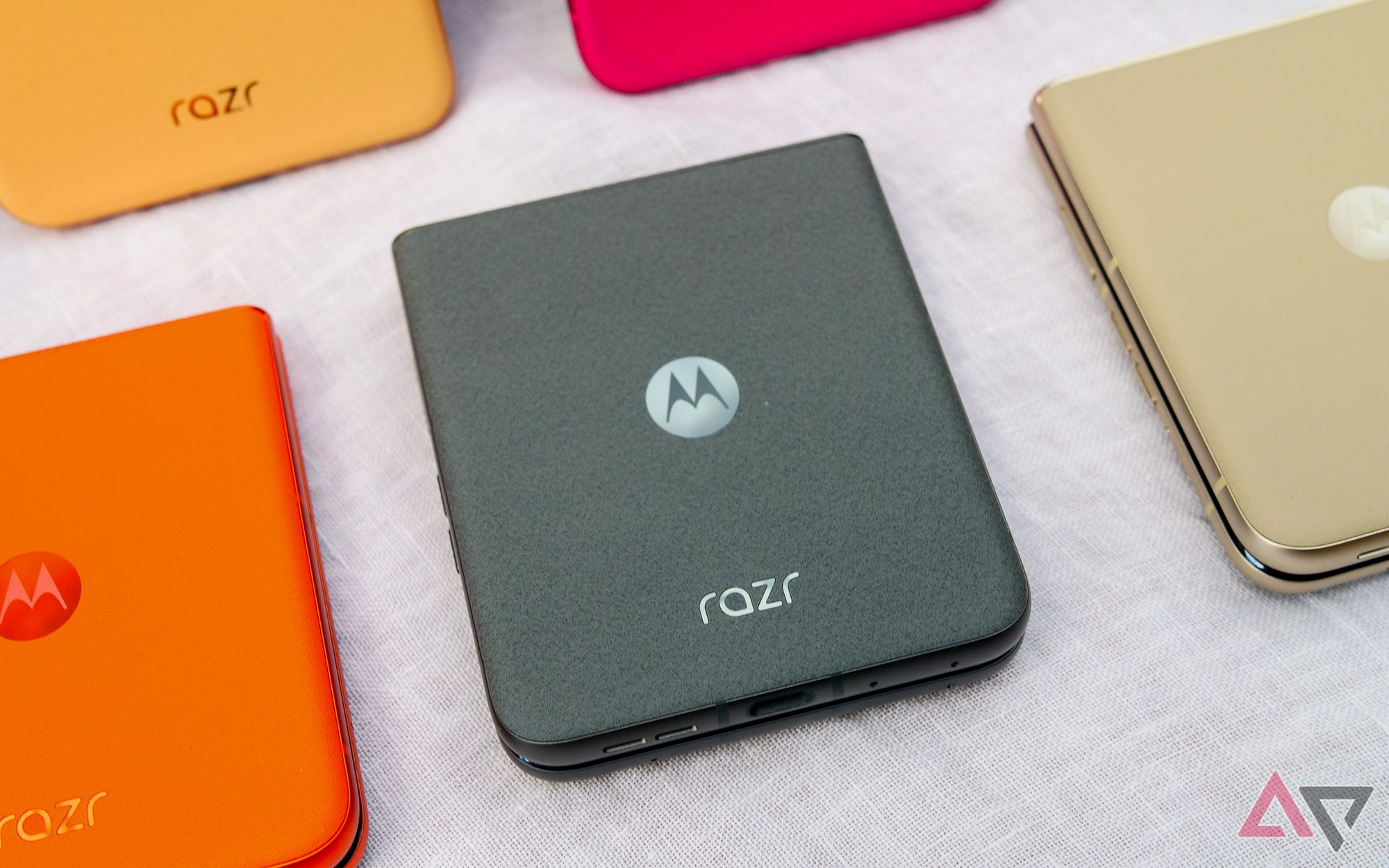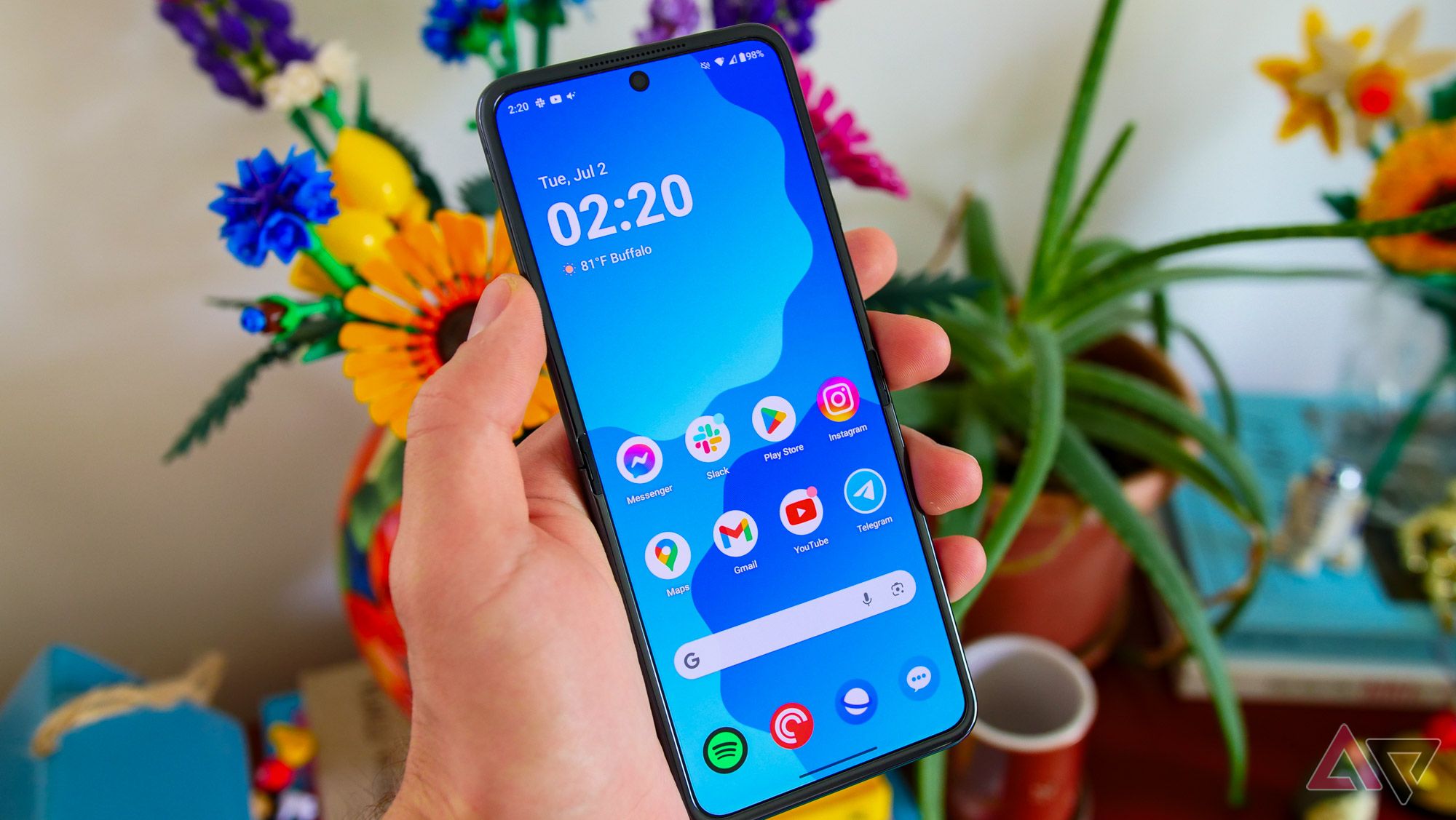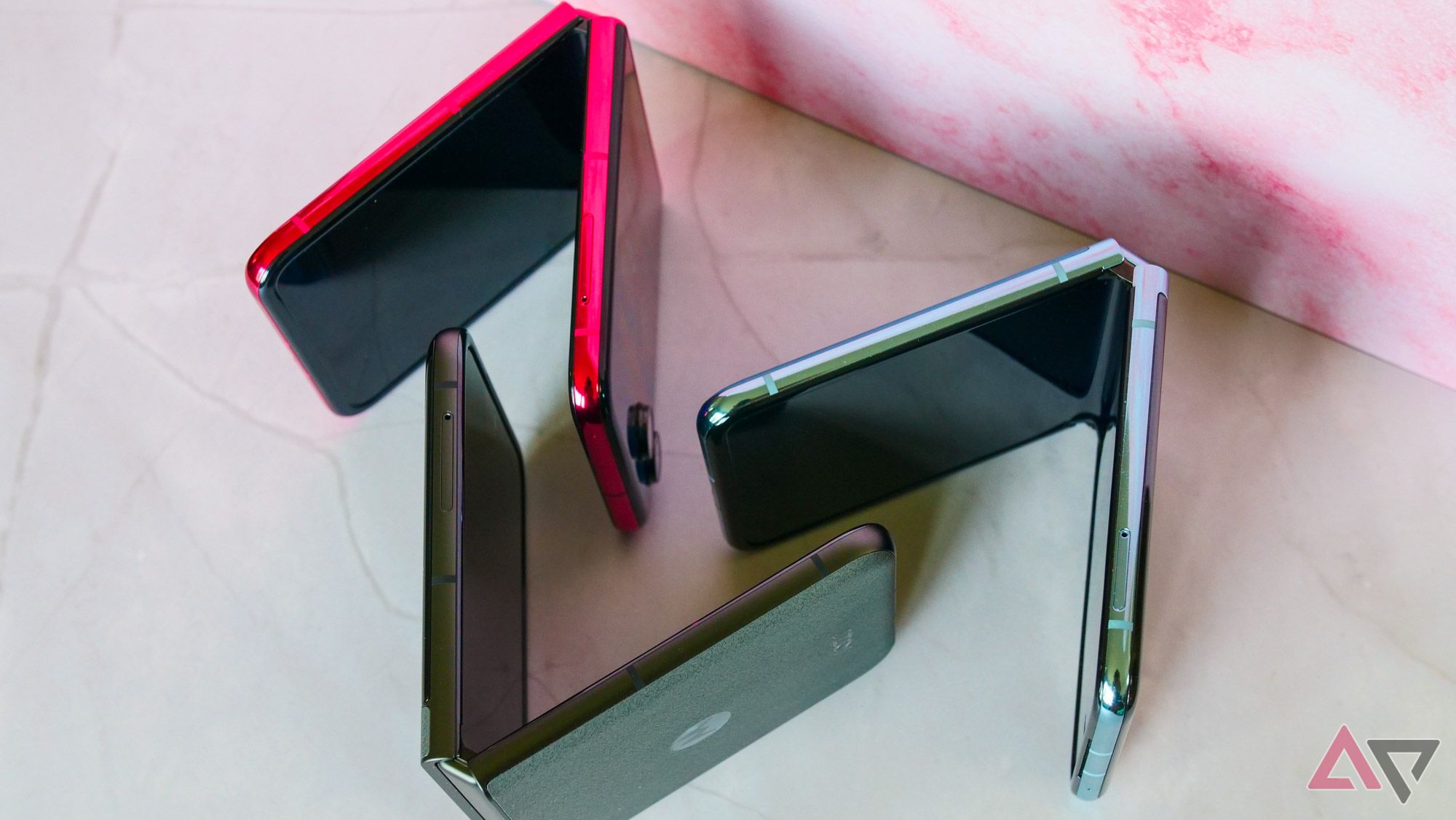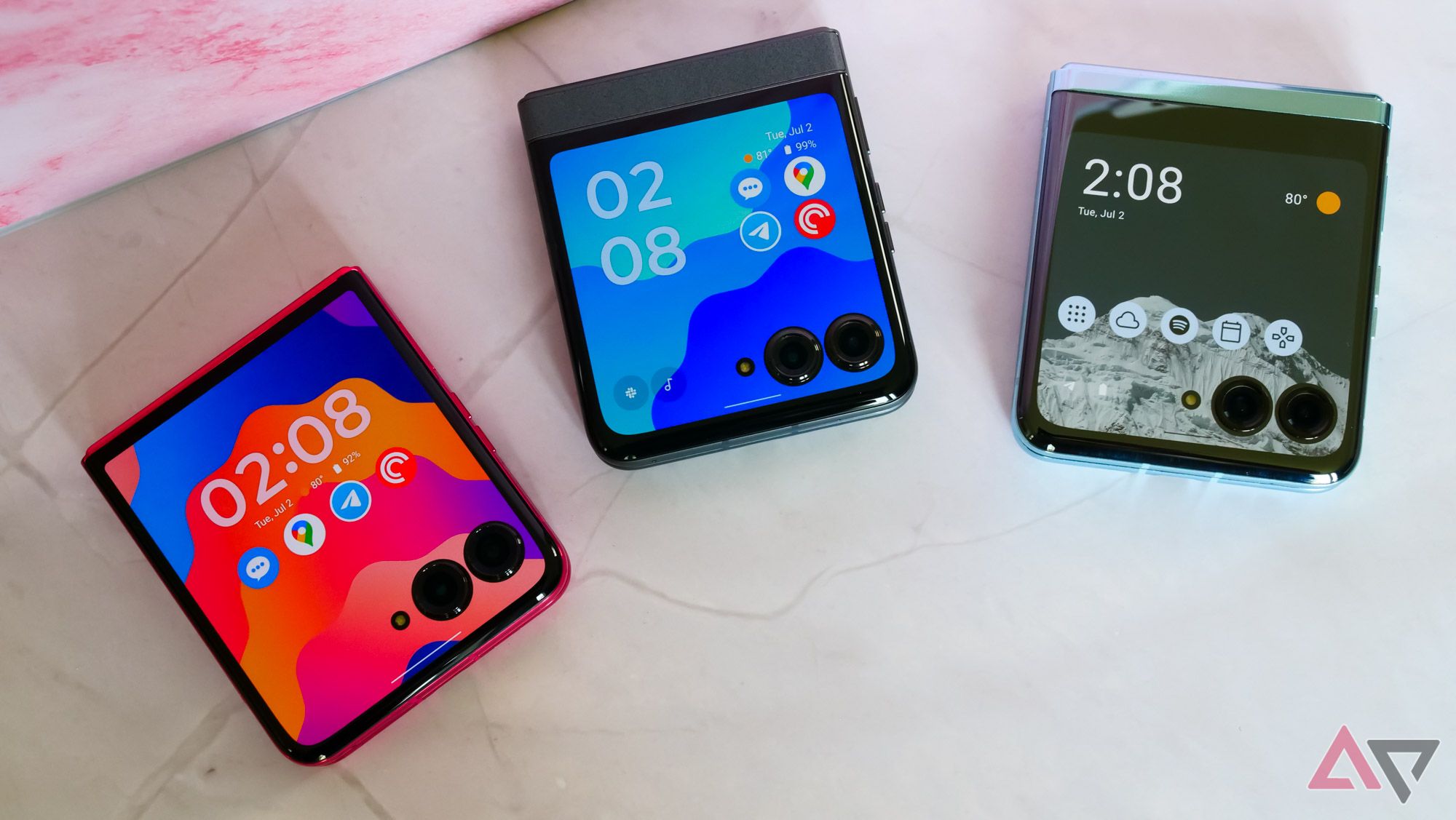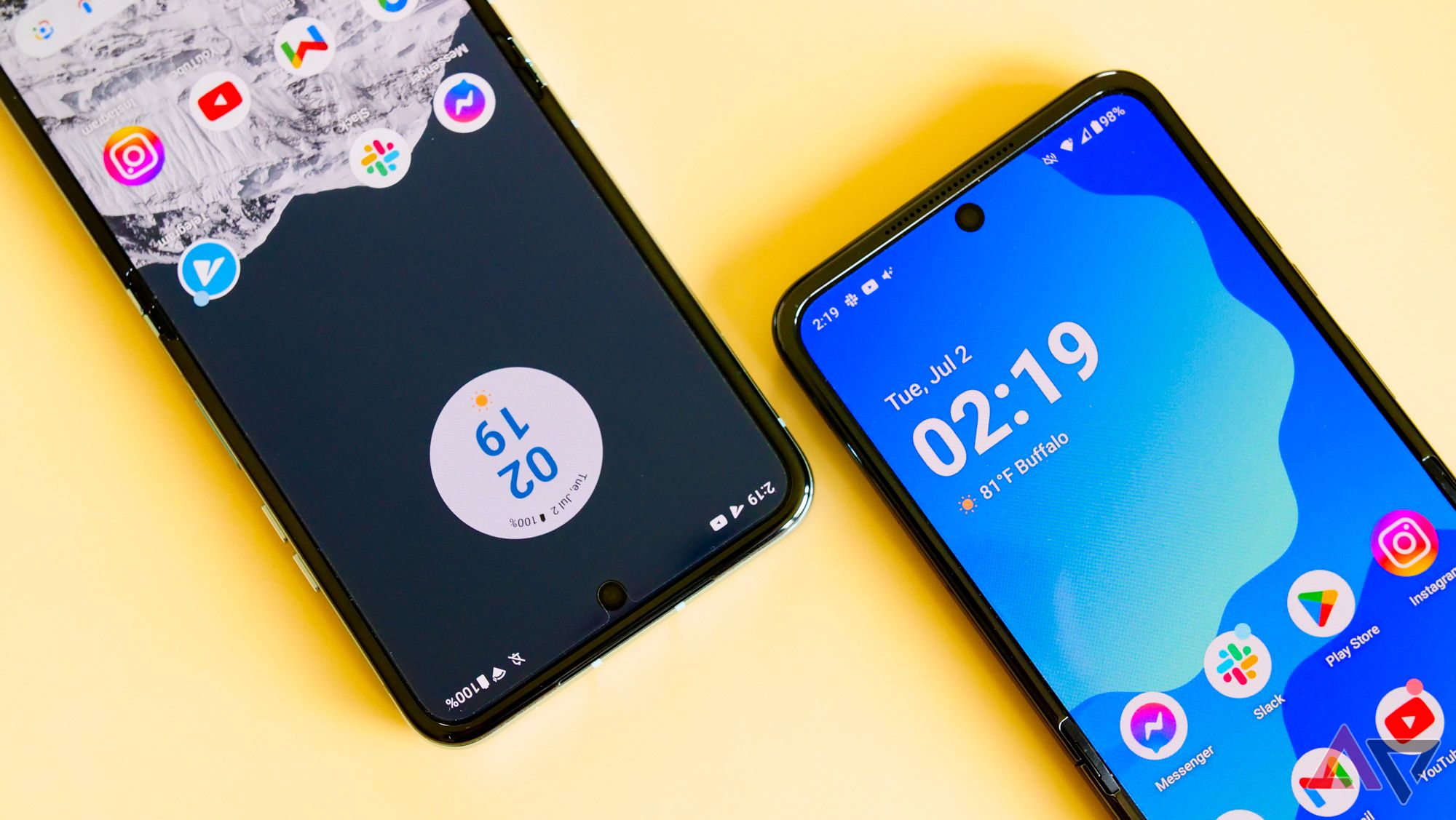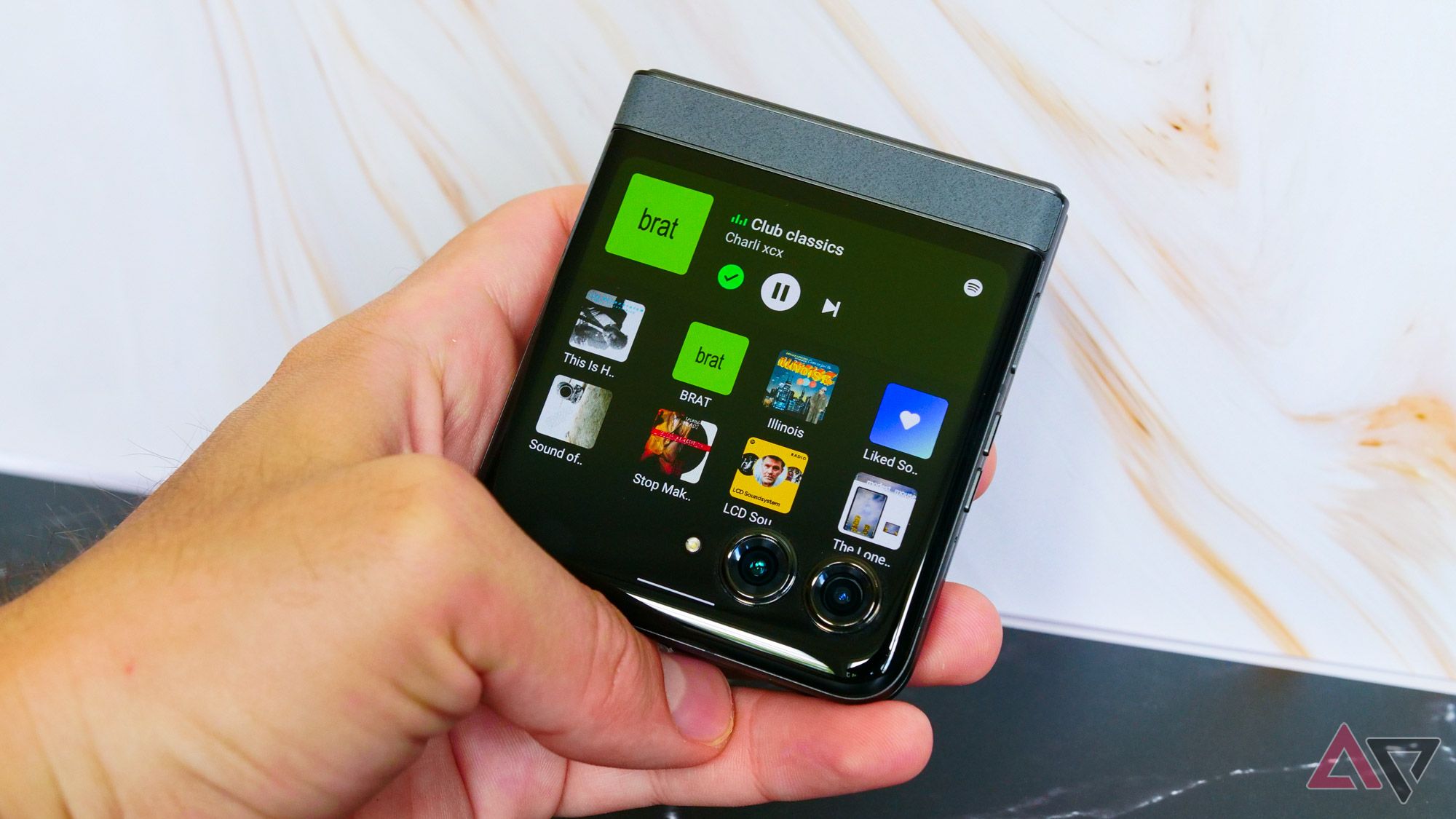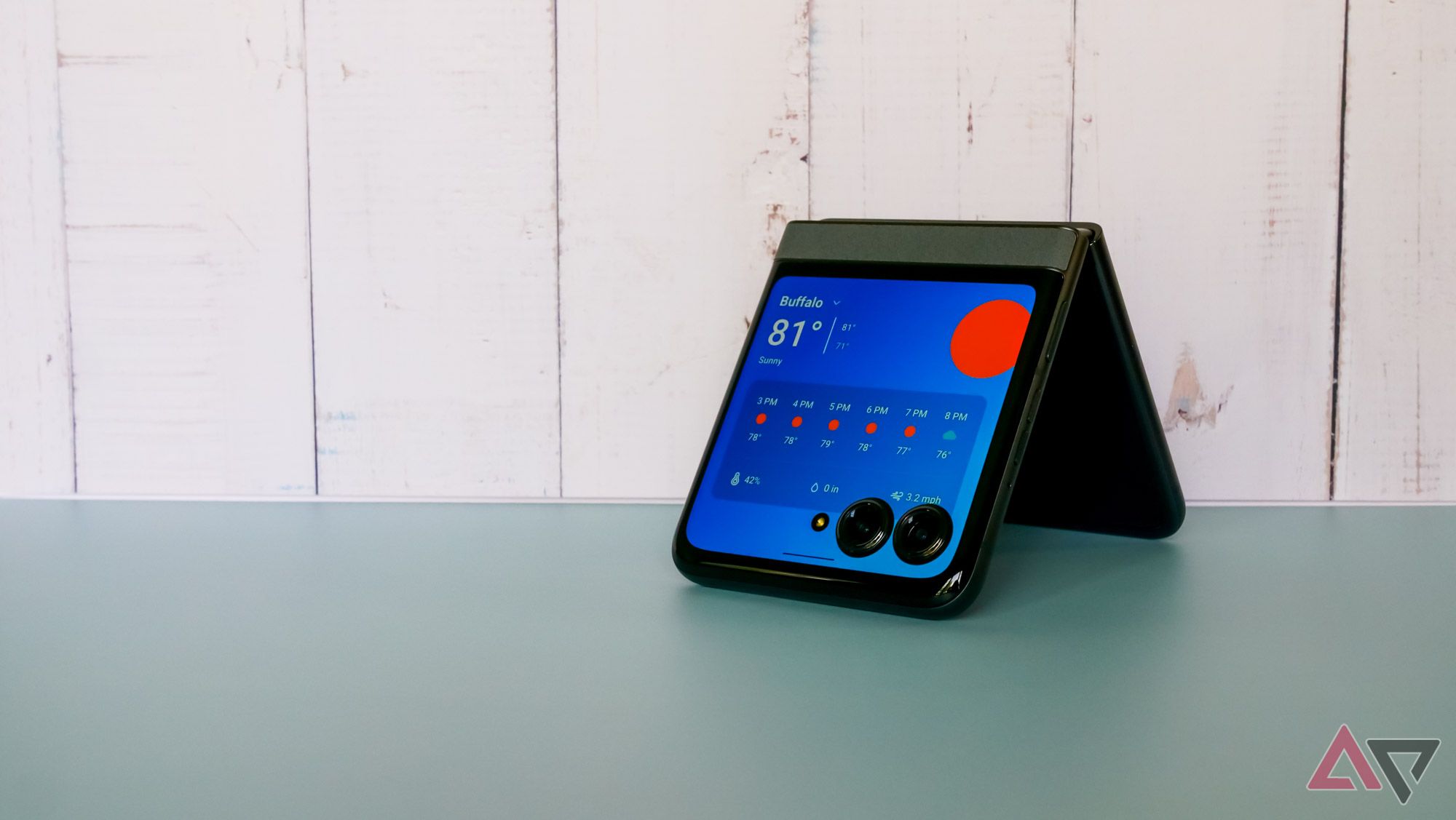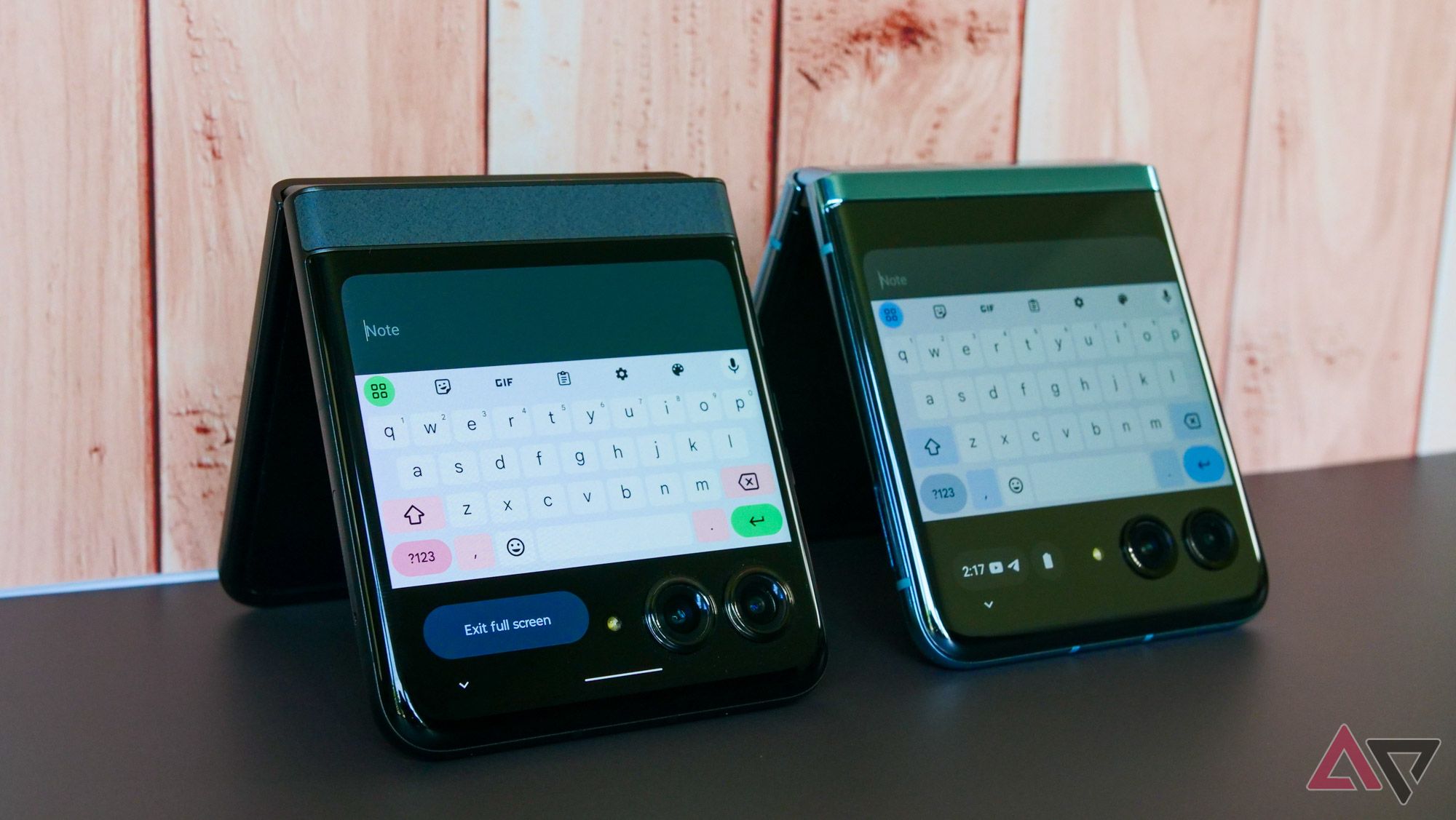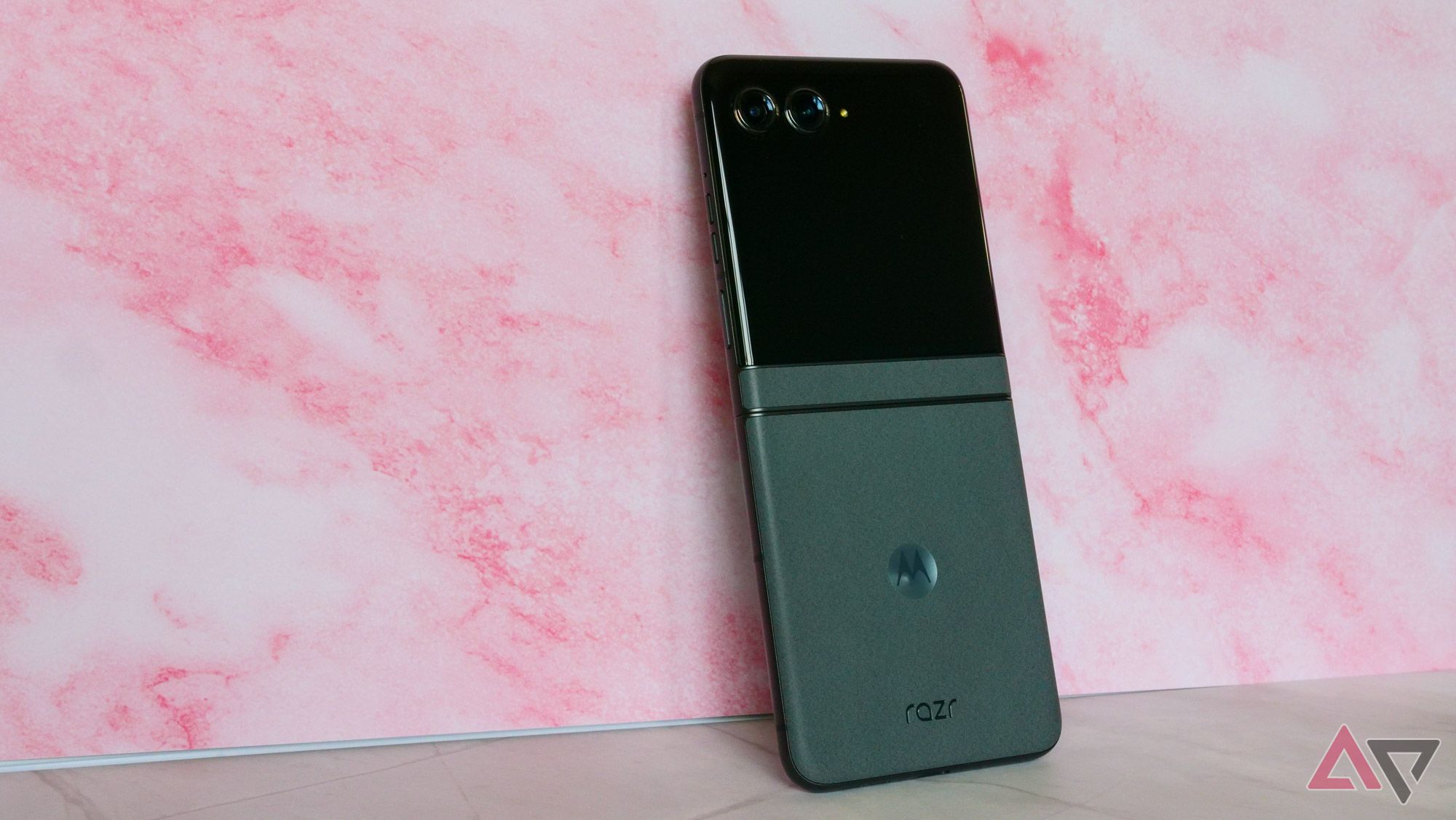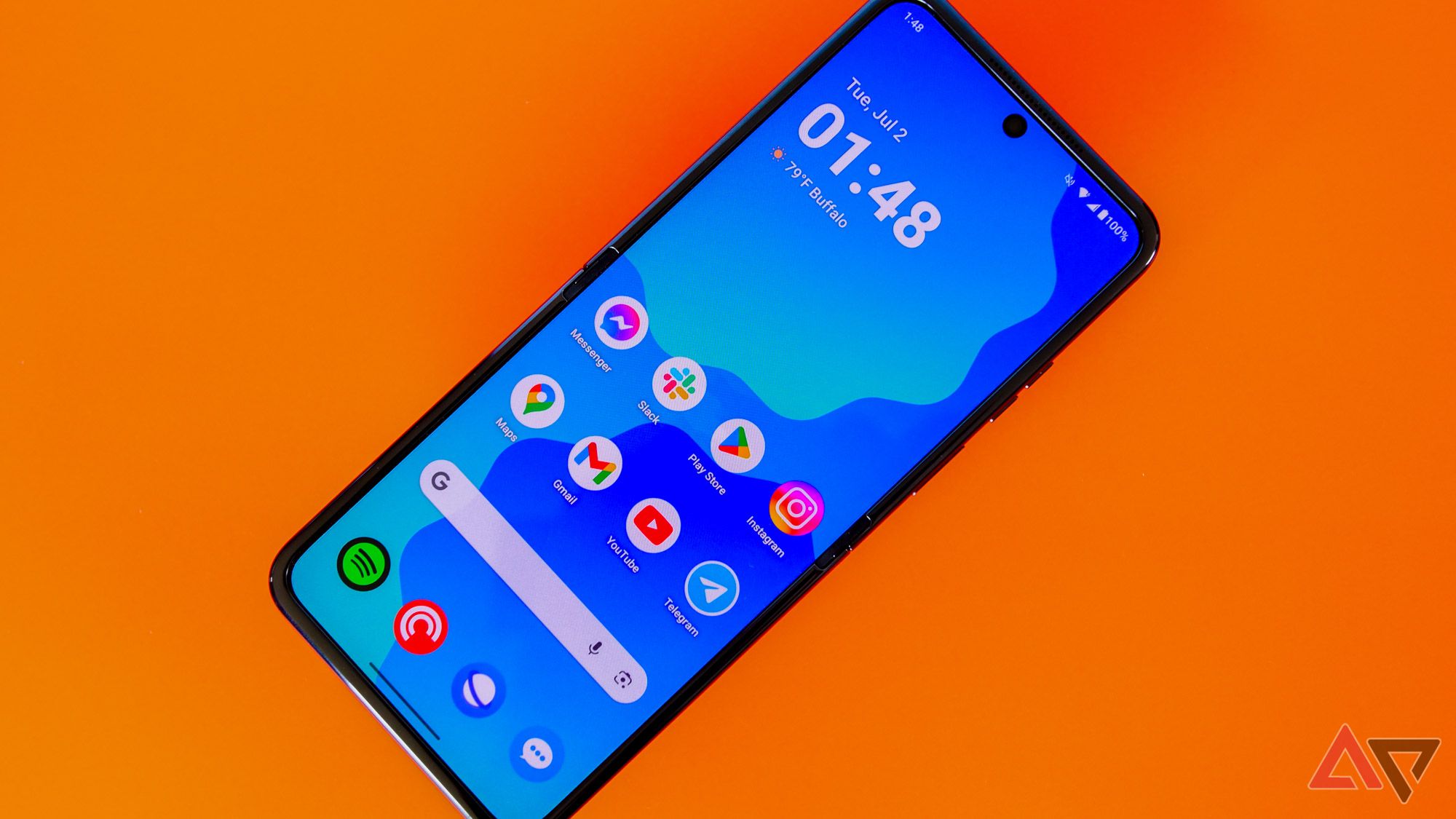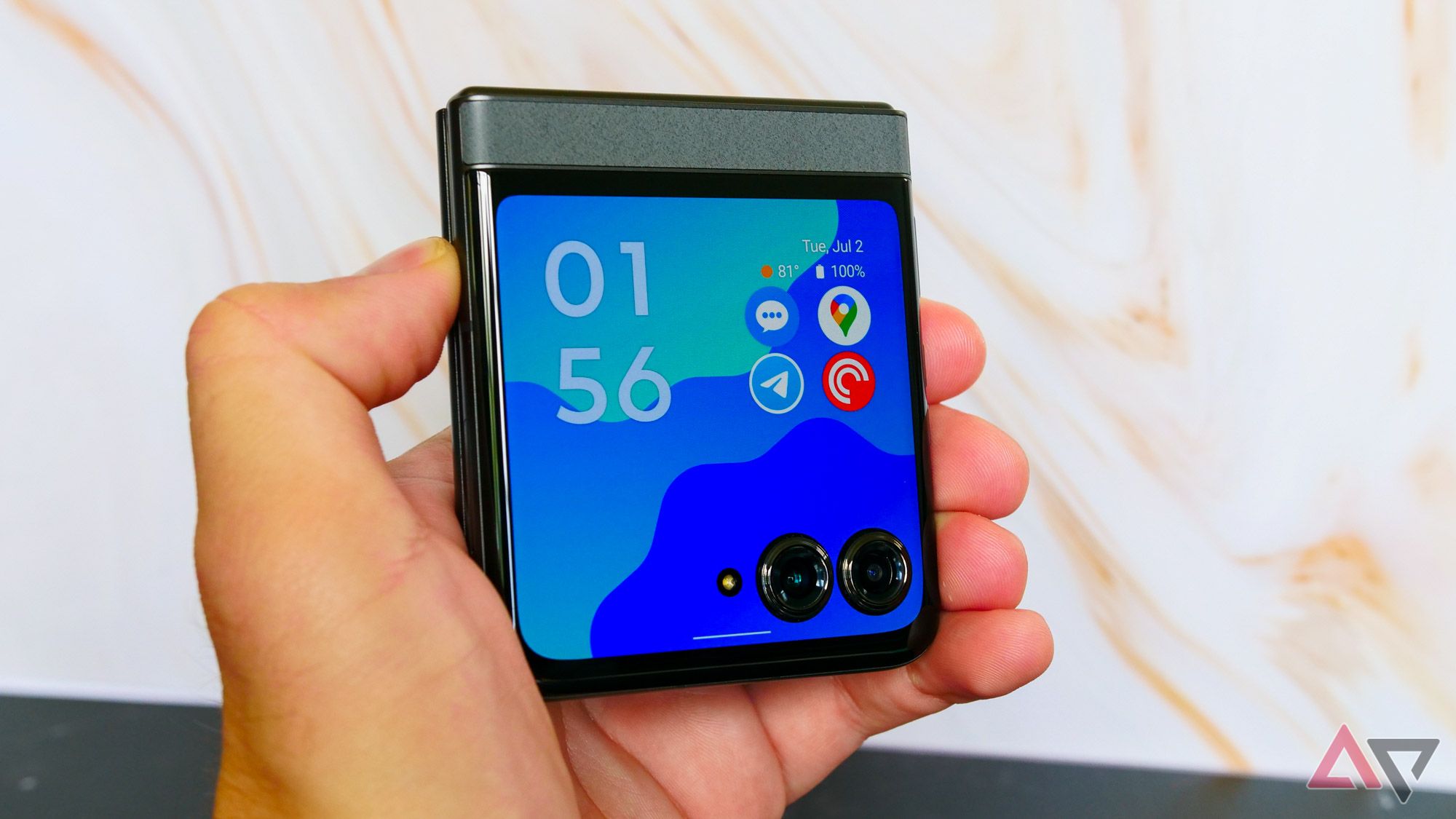This year’s Motorola Razr is a fascinating device. It aims to retain the $700 price point of last year’s budget-minded foldable — the first sub-$1,000 folding phone to launch in the US — while taking some of the best elements of the more expensive Razr+. That can be a tough hill to climb for all Android OEMs. Sometimes you end up with a Pixel 8a, an absolutely perfect combination of premium features and an excellent price point. Other times, though, you end up with Samsung’s Galaxy FE series, producing confusing devices that don’t make sense in a world of discounted flagships.
Motorola’s decision to effectively move last year’s premium Razr design to this year’s more affordable model is genius. The regular Razr combines everything I loved about the Razr+ with most of the improvements made specifically for that phone’s successor, resulting in the perfect mix of a cheaper price (relatively speaking) and a much better foldable design. It’s not just the larger 3.6-inch screen, either — there’s a lot going on here.


Best value
Motorola Razr (2024)
Motorola’s new midrange Razr combines everything we loved about last year’s foldable flagship with some great quality-of-life improvements shared with the 2024 Razr+. The result is a great entry-level clamshell phone — so long as you don’t care about software updates or camera quality.
- The core experience of last year’s Razr+, now at a cheaper price
- Some excellent quality-of-life improvements, including a better hinge and IPX8 water resistance
- Surprisingly solid battery life
- These cameras just aren’t very good
- Motorola can’t be trusted to update its phones in a timely manner
- You can find more powerful non-foldables for a lot less money
Price, availability, and specs
You don’t have to wait much longer to buy one
Motorola’s latest budget-friendly Razr hits Amazon, Best Buy, and Motorola’s web store as an unlocked model — with support for all three national carriers — on July 24th. If you’re feeling really excited, T-Mobile customers can preorder the phone starting July 10th. Like the unlocked model, T-Mobile, Consumer Cellular, and XFinity Mobile will all hit store shelves on July 24th. One day later, on July 25th, it’ll hit various MVNOs throughout the US, including Total by Verizon, Visible, Straight Talk, and Google Fi.
Regardless of where you buy it, the 2024 Motorola Razr is available in three colors this year: Spritz Orange, Beach Sand, and, as you’ll see through this review, Koala Gray. It comes in a single 256GB configuration for $700.
What’s good about the Motorola Razr (2024)?
It’s like last year’s Razr+, but, you know, mostly better
While it might be tempting to jump for last year’s Razr+, now available at a steep discount, I’d caution against it. This year’s $700 Razr has the same improved hinge as its more expensive sibling, and it feels so much better than what you’ll find on its predecessor. Gone is the janky, loose-feeling frame, replaced by something with a lot less wiggle and, notably, a much more satisfying snap. The hinge’s sides are much smoother, too; you might not notice whenever your finger rubs against these two black pieces of plastic.
It’s also IPX8-rated for water resistance, and while that might sound like a downgrade from last year’s more dustproof IP52-certified handset, Motorola tells me that IPX8 has a default dust rating of 5. In other words, this is as effective against dust while finally being a Razr that can fall in the pool and live to tell the tale.
You’ll find a few other changes compared to the 2023 Razr+, including a new top bezel design above the cover display and an all-new finish for the back. Motorola refers to this material as vegan leather, but it feels like soft-touch plastic to me. That’s not necessarily a bad thing, though the first time I touched this phone during my initial hands-on, I did get a fingernails-on-chalkboard-type sensation, and speaking with other reviewers, I wasn’t the only one. Thankfully, that feeling disappeared after a few minutes and never returned.
This year’s Razr is also a touch bulkier than its Plus-branded predecessor, measuring nearly a millimeter thicker when folded. I can’t say the phone felt bulkier in daily use, though, and the larger 4,200mAh battery squeezed in here makes that thicker chassis worth it. This cheaper Razr also kept the matte finish of its aluminum frame over the glossy colors of the Razr+, and I couldn’t be happier. This phone is grippier and less prone to building up grime than its more expensive counterpart; I hope Motorola brings this finish to both phones next year. It’s the more premium feeling of the two.
Although they aren’t identical, the Razr’s screens are bound to feel really familiar to anyone who touched the 2023 Razr+. Both measure identically — a 3.6-inch cover display paired with a 6.9-inch internal screen — though there are some changes worth noting.
This year’s external screen drops from 120Hz to 90Hz, and I can’t say I ever noticed a difference on a panel so small. It’s also brighter, jumping up to 1,700 nits of peak brightness from 1,100. And finally, it supports a true always-on display, something no Motorola phone has included up to this point. I’ve asked Motorola if the company intends to bring this to last year’s Razr+ as part of its eventual upgrade to Android 14, but I received a non-answer in response. I wouldn’t hold my breath.
On the inside, Motorola’s 6.9-inch 1080p main display hasn’t undergone quite as many changes in its transformation to a cheaper model. It’s stuck at 120Hz rather than 165Hz — technically a downgrade, though I can’t imagine most consumers complaining about this — and, like the outer panel, gets a brightness boost compared to last year.
The Razr+ (2023) compared to the Razr (2024).
Although Motorola is advertising this screen with a peak brightness rating of 3,000 nits of brightness, it should come as no surprise to learn that that’s actually the HDR rating. I’ve confirmed with the company that this display reaches 1,500 nits in high brightness mode. In actual use, I still wish this screen got a touch brighter — it’s a little tough to see in the heat of the July sun — but I’m mostly nitpicking. It’s a good screen, especially for a foldable at this price. And, bonus, the screen protector is actually edge-to-edge this year. Say goodbye to that ugly camera cutout.
Largely speaking, I don’t have too much negative to say about Motorola’s software experience. Although I’ve found the company’s Android 14 build pretty lackluster on other 2024 phones — it’s just different enough from a stock build of Android to make me wonder why the company made these changes to begin with — it’s perfectly fine here. I was relieved, for example, to see Glance’s lock screen ads and those annoying pre-installed “folders” that actually serve as on-device ads did not infect this $700 foldable despite its status as a budget device.
Motorola did make some pretty big changes to how the cover screen works, though, and they’re mostly for the better. New home screen layouts, overhauls for cards like weather and Spotify, and support for any app widget of your choosing all make this feel like a more fully functional device, even when you don’t flip open the phone. As with last year, you can use just about any app from your cover screen simply by accepting a warning at first launch. No need to admit your love of Galaxy within Good Lock — here, apps just work.
This year’s $700 Razr swapped from Qualcomm to MediaTek for its chipset needs, and I’m mostly satisfied with the results. The Dimensity 7300X is a brand-new 4nm SoC designed with dual screens in mind, and as long as you don’t push it, it delivers totally adequate performance for daily tasks. Although I wouldn’t trust it to run Genshin Impact on anything more than low settings, titles like Pokemon Go — which, unfortunately, recently sank its claws back into me — functioned totally fine.
I don’t usually take benchmarks very seriously, but considering the Razr+ from last year is still around for a very similar price, I decided to run Geekbench on both phones. The results were what you’d expect: a pretty steep drop in raw numbers from a one-time flagship to a decidedly midrange smartphone. Don’t let that deter you from picking this one up, though; unless you’re a die-hard mobile gamer needing all the power you can get, this MediaTek chip is all you’ll probably need.


Razr+ (2023) vs. Razr (2024)
If you do fall into that former category, I’d recommend checking out the new Razr+—its Snapdragon 8s Gen 3 might not be the most powerful on the market, but it’s the step-up you’ll be looking for in your next foldable.
A few other quick positives on this year’s Razr. Although the speakers are still just serviceable at best — neither an upgrade nor a downgrade from last year’s Razr+ — haptics are night and day. I can barely feel any sort of physical feedback when typing on my Razr+, but this year, everything feels punchy and sharp.
Meanwhile, battery life is surprisingly solid, likely thanks to that boost in capacity. I’ve been getting through days of mixed use with no problem, and even in times of heavy drain — like playing Pokemon Go in direct sunlight on a lengthy walk — the device held on with enough of a charge left to keep me from rushing to a charger. 30W wired and 15W wireless charging are huge improvements here, guaranteeing some solid, if not ultra-rapid, power-up times.
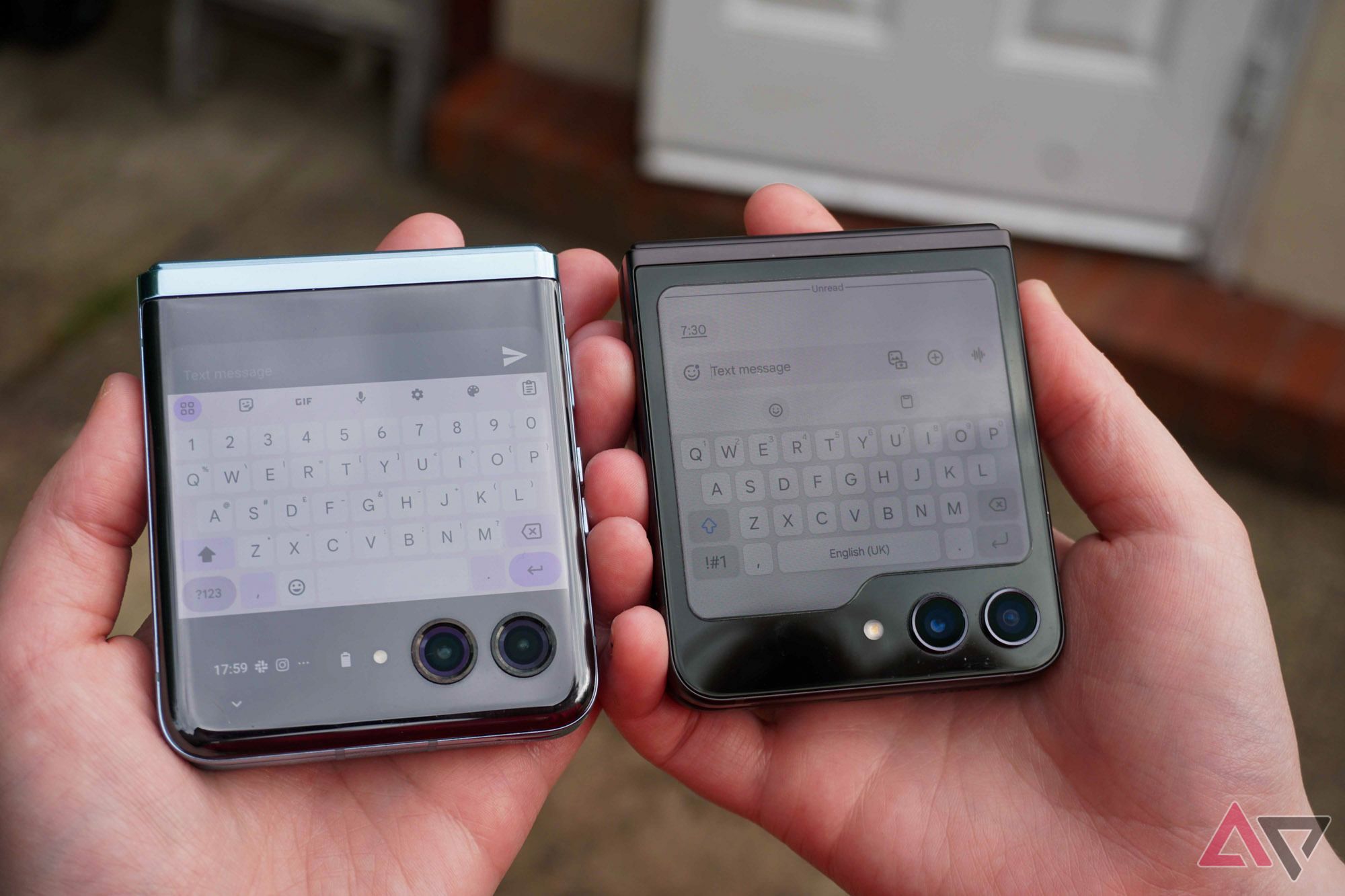
Related
I’m a diehard Samsung user, but the new Moto Razr+ has me questioning my allegiance
Even with the Galaxy Z Flip 6 on the horizon
What’s bad about the Motorola Razr (2024)?
Hope you don’t care about software updates
As mentioned, I like Motorola’s Android build on the Razr, save for a few exceptions. First, I did notice at least one frustrating change between generations: you can no longer resize Gboard on the cover screen. For my first few days with the Razr, I thought I was just out of practice with its tiny external keyboard, but upon booting up last year’s Razr+, I confirmed my suspicions. Gboard on my current device is noticeably smaller than what I had it set to on my previous flip phone of choice, and there is seemingly no way to change this.
I did ask Motorola about this, and the company explained that, previously, changing the size of Gboard on the outer screen would also change how Gboard looked on the internal display. In disabling how the keyboard shape changes on the outer screen, users can not make their internal keyboard as large or small as they wish. I still would’ve liked the option to swap back to this old method, considering I found a pretty great sweet spot on last year’s Razr+, but the logic behind Motorola’s thinking does make sense.
Meanwhile, it’s worth returning to last year’s flip phones for my biggest concerns about this new generation. Neither 2023 Razr has yet to get Android 14, with a Motorola rep telling me it’s planned to arrive sometime this summer. I don’t think that level of support is good enough, nor do I think the combination of three OS upgrades and four years of security patches should cut it in 2024.
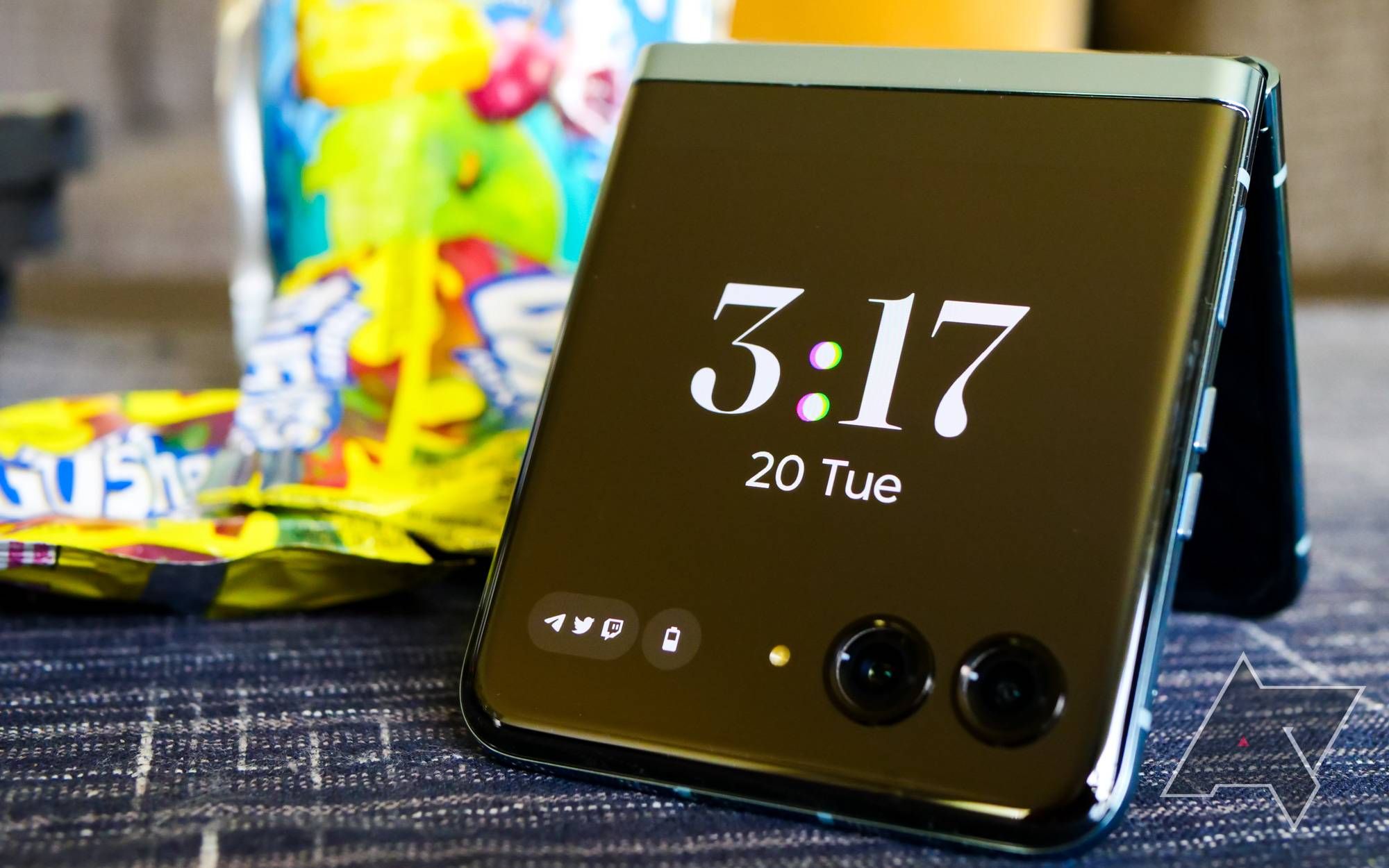
Related
Motorola makes great hardware, but its software still disappoints in 2024
Resetting my phone for a security patch is unacceptable
I’m not asking for Motorola to match the likes of Samsung and Google here — although that would be nice. But falling behind OnePlus, a company with a much heavier skin and more layers of customization, is pretty inexcusable. I would not blame anyone for skipping out on either 2024 Razr purely on Motorola’s bad track record of software support. Longevity matters more than ever for smartphones these days, and the company needs to step it up here.
Frankly, this poor support also has me wondering when Motorola’s suite of AI features will ship. The company has left Moto AI stuck with a vague “in the coming months” timeframe. However, considering software upgrades are simply not its bread and butter, I wouldn’t be surprised to see that launch slip to later in 2025. Some of these tools — automated notification summaries and reminders, for example — sound exactly like what I want out of the tech world’s obsession du jour, but it’s not here. The phone arrives out of the box with Gemini, which, you know, is fine. It’s fine.
Finally, let’s address the least essential part of practically any foldable: the cameras. I wasn’t particularly impressed with the shooters on the 2023 Razr+, and I still feel that way with this new Razr. The main 50MP f/1.7 sensor is fine in broad daylight, so long as you don’t zoom in too far on your subject.
Unfortunately, low-light or night shots tend to be overblown and overbrightened, though with enough ambient light, you can make them work. The ultrawide lens, meanwhile, is a 13MP f/2.2 sensor with an improved 120-degree angle over last year’s Razr+. Thanks to that cover display, it’s good enough for the occasional group shot, but not much else.
That said, I wouldn’t expect every shot to turn out perfectly, especially if your image has a brighter background than your foreground. In one example, Motorola’s processing completely blew out the highlights in the background, turning out-of-focus trees into a blurry, artifact-ridden mess. Meanwhile, my cat looks washed out in the foreground, completely desaturated compared to the sunshine-lit backdrop. It’s just not a good photo, even for social media, and it’s unfortunately fairly representative of what you’ll expect to see on this $700 foldable.
Should you buy it?
If you’re focused on power and performance above all else, you can find much better deals than the new Motorola Razr for $700. The OnePlus 12R and the Pixel 8a are significantly cheaper, and even Google’s flagship Pixel 8 Pro is routinely on sale for just $50 more than this device. But if you’re interested in a foldable, you probably aren’t seeking the best specs or impressive cameras. Frankly, this is a pretty solid midrange phone built into a flip phone chassis, and that’s really all it needs to be.
It’s a novelty, sure, but whether you’re interested in the smaller folded form factor or you find this sort of device fashionable, it’s pretty great to see a clamshell phone as good as this one available for just $700 — and that’s before Motorola’s inevitable sales. While I think most Android Police readers would be better served by the $1,000 Razr+, if you’re interested in picking up a foldable without breaking the bank, this new Razr might be the way to go.

Motorola Razr (2024)
If you can live with a mediocre camera — and you don’t mind Motorola’s non-existant software support — the new Razr for 2024 is a great entry-point into the world of clamshell Android phones at a price that’s near impossible to beat.
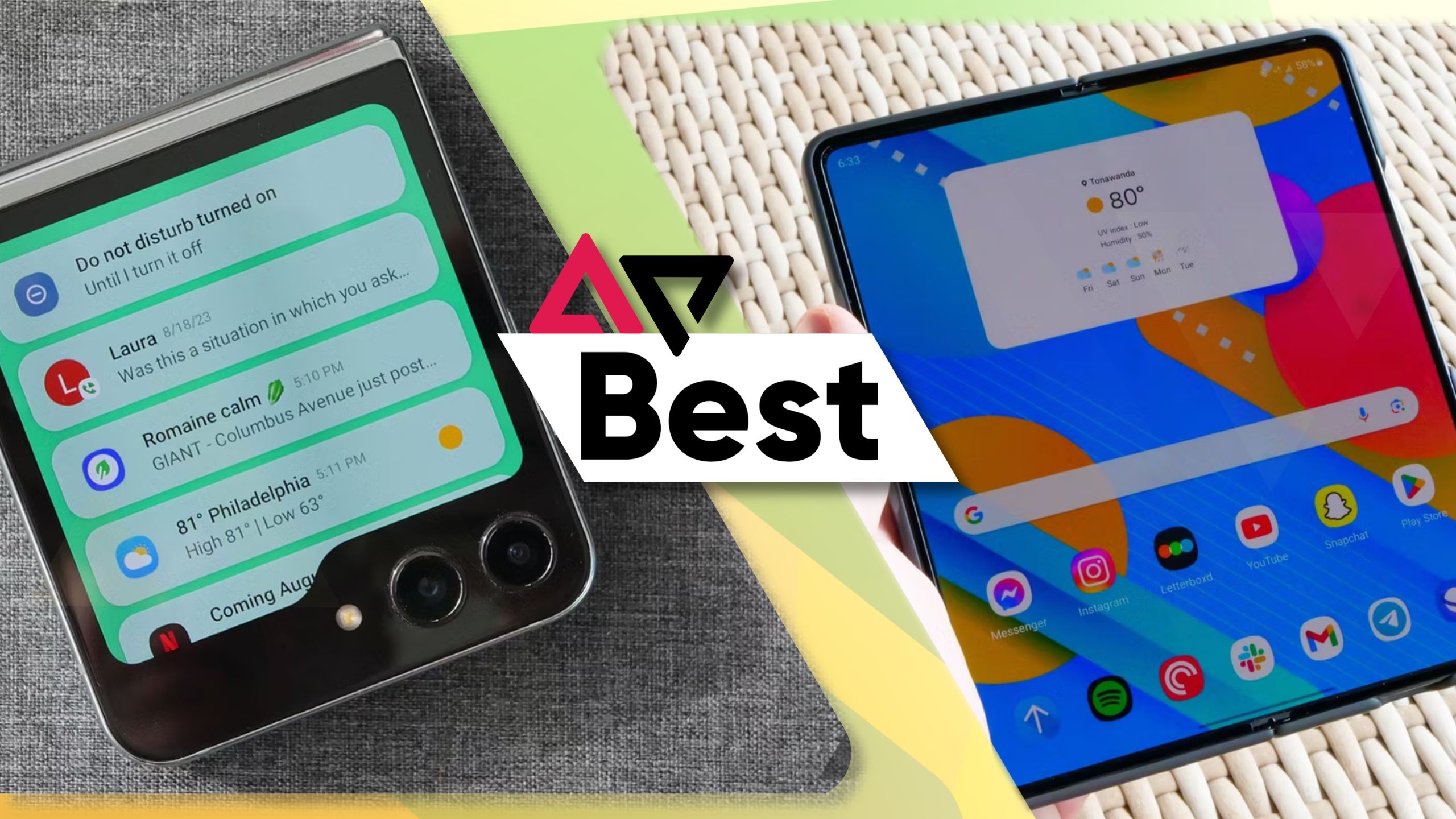
Related
Best foldable phones in 2024
Whether you want a clamshell phone or a folding tablet, there’s something here for you
Source link

